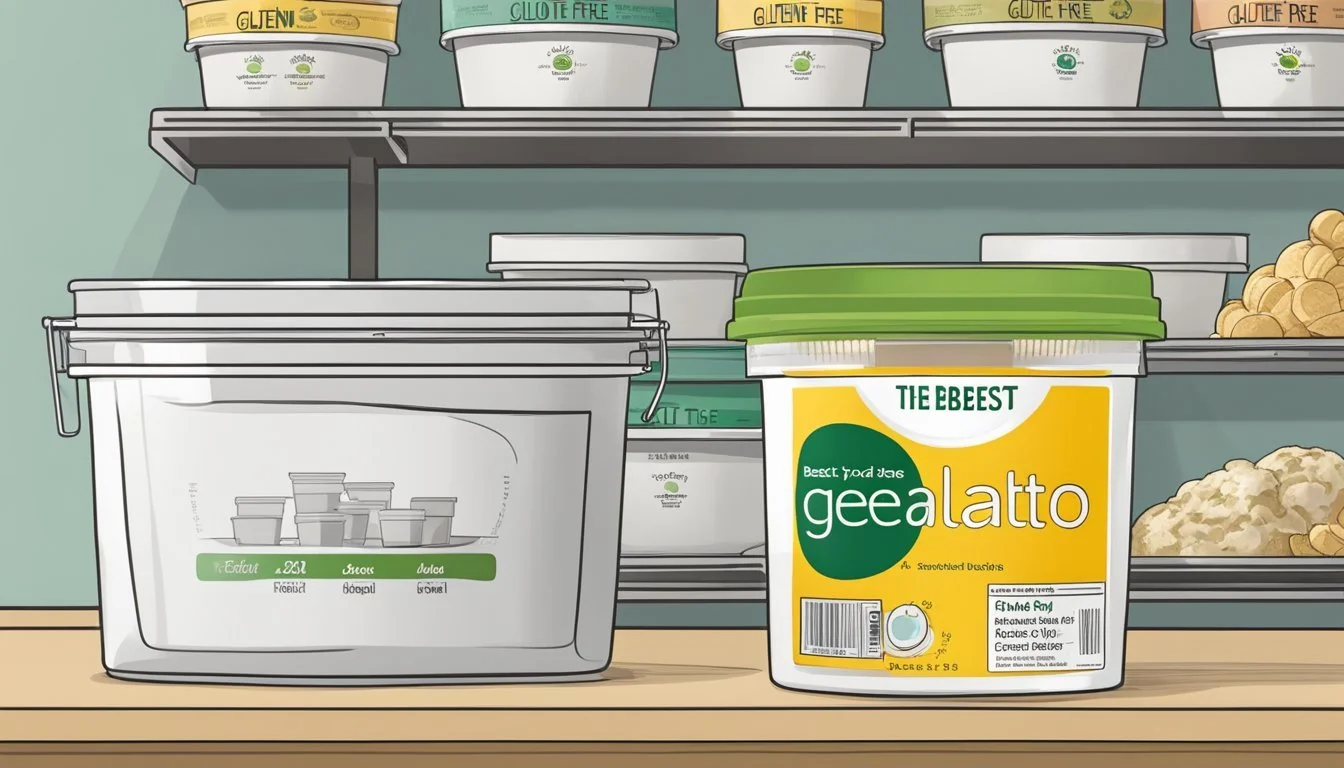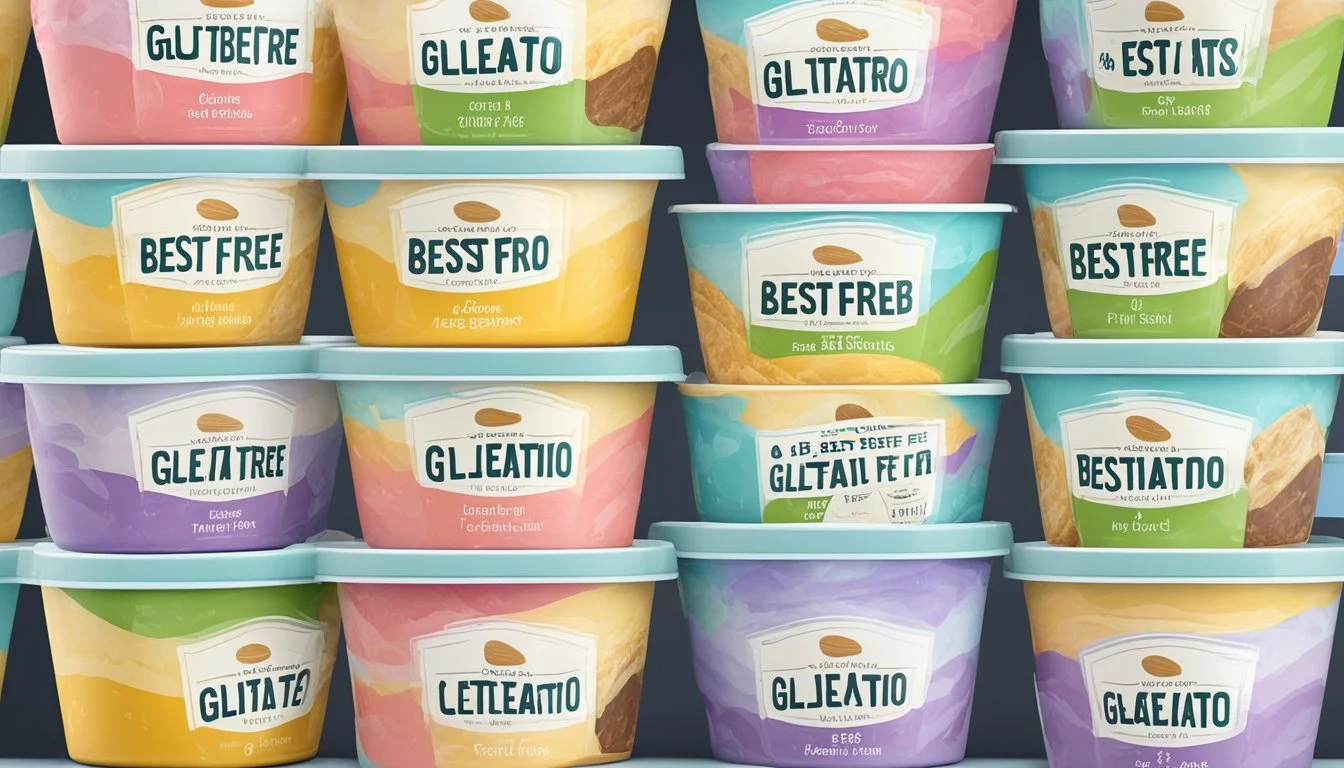How Long Does Gluten-Free Gelato Last?
Shelf Life and Storage Tips
When storing gluten-free gelato, it's crucial to maintain the right conditions to preserve its quality and taste. Gluten-free gelato can remain fresh and creamy for up to one month if stored at a consistent temperature between -15°C to -18°C (5°F to 0°F). This ensures that the gelato stays dense and free from ice crystals, which is especially important for those with celiac disease or gluten sensitivity to enjoy their treats safely.
Understanding how long gluten-free gelato lasts also involves knowing the types of gelato best suited for gluten-free diets. Flavors such as pure cocoa chocolate, vanilla made from vanilla beans, and fruity options like strawberry and lemon are typically gluten-free. Ensuring these ingredients are free from cross-contamination is vital for maintaining the integrity of a gluten-free diet.
It's not just about the flavors, though. The storage environment plays a key role too. Gluten-free gelato should be kept in airtight containers to prevent exposure to moisture and other contaminants. This meticulous care helps guarantee that each scoop remains a delightful, safe indulgence for those with gluten sensitivity.
Understanding Gluten-Free Gelato
Gluten-free gelato is a dessert option for those sensitive to gluten. The absence of gluten, a protein found in wheat, barley, and rye, makes it safe for people with celiac disease or gluten intolerance.
Ingredients in Gluten-Free Gelato:
Milk: Provides creaminess and richness.
Sugar: Adds sweetness.
Natural Ingredients: Such as fruit purees and nuts.
Common flavors include vanilla, chocolate, pistachio, strawberry, and lemon.
Important Considerations
Labels: Always check labels to ensure the product is certified gluten-free.
Cross-Contamination: Be cautious of cross-contamination in non-dedicated gluten-free facilities.
Dedicated gluten-free facilities handle and produce gelato without any risk of gluten contamination.
Practical Tips
Opt for gelato served in cups rather than cones to avoid gluten from traditional ice cream cones.
Verify if a gelateria is a dedicated gluten-free facility by calling ahead.
By being mindful of labels and the environment in which the gelato is produced, one can enjoy a safe and delicious treat.
The Ingredients of Gluten-Free Gelato
Gluten-free gelato primarily relies on core ingredients like milk, sugar, and natural flavors. Special attention is needed for added flavors and mix-ins to avoid gluten contamination. Below, each component is detailed for a comprehensive understanding.
Base Ingredients
Milk and cream form the foundation of gelato, providing its creamy texture. These dairy products are naturally gluten-free. Sugar is another essential ingredient, adding sweetness and aiding in achieving the right consistency. Eggs, particularly egg yolks, are sometimes used as emulsifiers to improve texture. Thickeners like corn starch or guar gum can be added to enhance creaminess without gluten risk.
Base Ingredients:
Milk
Cream
Sugar
Egg yolks (optional)
Thickeners (corn starch, guar gum)
Flavor Varieties
Gelato comes in numerous flavors, many of which are gluten-free. Common fruit-based flavors like strawberry, lemon, and raspberry use fresh fruit or fruit puree. Nut-based flavors such as hazelnut, almond, and pistachio rely on ground nuts. Other popular gluten-free options include chocolate (using pure cocoa), vanilla (using vanilla beans), and coffee (using coffee, milk, and sugar).
Popular Gluten-Free Flavors:
Chocolate
Vanilla
Strawberry
Lemon
Raspberry
Coffee
Hazelnut
Almond
Pistachio
Additives and Mix-Ins
Additives and mix-ins are crucial for both the texture and taste of gelato. Common additives include honey, used as a natural sweetener, and chocolate chips, which must be checked for gluten-free labeling. Mix-ins such as nuts or fresh fruit enhance flavor, texture, and variety without introducing gluten. However, items like cookies and certain flavorings (e.g., Tiramisu, cookies and cream) can contain gluten and should be avoided.
Types of Additives and Mix-Ins:
Honey
Chocolate chips
Fresh fruit
Nuts (hazelnut, almond)
Avoid: Cookies, gluten-containing flavorings
Shelf Life and Storage
Proper storage is essential to maintain the quality of gluten-free gelato. Factors like temperature, storage conditions, and signs of spoilage help ensure that your gelato remains safe to consume.
Optimal Storage Conditions
Gluten-free gelato should be stored at a stable temperature between -13°F and 0°F (-25°C to -18°C). This range ensures a dense, creamy texture, preventing the formation of ice crystals.
Avoid frequent temperature changes. When scooping gelato, quickly return it to the freezer to minimize air exposure and crystal formation. Use a cooler or thermal bag with ice packs when transporting gelato to your freezer.
Signs of Spoilage
Be aware of spoilage signs to ensure your gelato's safety and quality. Ice crystal formation on the surface can indicate temperature fluctuations. A gritty texture or off odor also signify spoilage.
The presence of excess water in the gelato can affect its taste and texture. Always check the gelato's expiration date, as this is a clear indicator of its shelf life and safety.
Freezer Life
When stored correctly, gluten-free gelato can last up to 6 months in the freezer. Maintaining a steady and cold environment slows down the degradation process.
Label containers with the date of freezing to keep track of storage time. Excess air in the container can degrade quality, so ensure a tight seal. Proper storage extends the enjoyment of gluten-free gelato while preserving its intended taste and texture.
Health and Dietary Considerations
When enjoying gluten-free gelato, it is essential to consider various health and dietary factors. These include the impact of gluten-related disorders, nutritional content, and potential allergen information.
Gluten-Related Disorders
Individuals with celiac disease or gluten sensitivity must strictly avoid gluten. Gelato itself can be gluten-free if prepared with ingredients that do not contain wheat, barley, or rye. Care must be taken to avoid cross-contamination during preparation and serving.
Common symptoms of gluten-related disorders include:
Bloating
Diarrhea
Gas
Constipation
To ensure safety, consumers should look for gelato labeled as certified gluten-free.
Nutritional Content
Gluten-free gelato can be part of a balanced diet. A half-cup serving typically offers 103 milligrams of calcium, providing 9-10% of the RDI. Some varieties are also enriched with vitamins, such as vitamin A. The impact on daily caloric intake depends on the flavor and ingredients, which can vary substantially.
Be sure to:
Read labels: Check for specific nutritional information.
Be aware of hidden sugars and fats, which can impact overall health.
Note that while gelato may seem similar to ice cream, it often has less fat and fewer calories.
Allergen Information
Apart from gluten, gelato can contain other allergens. Common allergens include milk, eggs, and sometimes nuts. Dairy-free and fat-free options are available but require careful label reading to avoid allergens if necessary.
Key steps for avoiding allergens:
Check ingredient lists: Look for potential allergens.
Identify symbols on packaging that indicate allergen presence.
Determine the presence of cross-contamination risks for those severely allergic.
In summary, enjoying gluten-free gelato is feasible with careful attention to these health and dietary aspects. By understanding the importance of gluten avoidance and nutritional intake, one can savor this treat without compromising health.
Serving and Presentation
When serving gluten-free gelato, it's important to focus on maintaining the correct temperature to preserve its texture and selecting appropriate presentation styles to enhance the experience.
Serving Temperature and Texture
Gluten-free gelato should be served at a temperature between -15°C to -18°C (5°F to 0°F). This temperature keeps the gelato dense, creamy, and free from ice crystals. Unlike regular ice cream, gelato has a lower fat content and less air, making texture preservation crucial.
Many gelaterias use specialized freezers to maintain consistent temperatures. When scooping gelato, care should be taken to ensure smooth, even scoops that highlight its rich texture. Serving gelato too cold can make it overly hard, while serving it too warm can cause melting and a loss of its unique creamy consistency.
Presentation Styles
Presentation plays a key role in enjoying gluten-free gelato. Common methods include cups, cones, and sorbets.
Cups are ideal for those who want to avoid any risk of cross-contamination since gluten-free cones can sometimes be hard to find. Clear plastic or glass cups can showcase the vibrant colors of natural ingredients like fruit purees or chocolate.
Serving Size and Order also matter. Offering different sizes allows customers to enjoy a small taste or a larger treat. Garnishing gelato with toppings such as fresh fruits, nuts, or gluten-free cookies can enhance both flavor and visual appeal.
Cones are popular, especially when made from gluten-free ingredients. It’s essential to ensure that the cones are stored separately to avoid contamination. Innovative presentations, such as layering multiple flavors or using edible toppings, can turn a simple gelato order into an aesthetically pleasing and delicious experience.
Choosing and Buying Gluten-Free Gelato
When it comes to choosing and buying gluten-free gelato, attention to detail is crucial. Consumers need to be aware of the labeling practices, trusted brands, and the benefits of homemade versus commercial options.
Reading Labels and Certifications
Reading labels is one of the most critical steps in ensuring the gelato is gluten-free. Look for certifications such as the GF (Gluten-Free) label, which confirms that the product meets gluten-free standards.
Many reputable gelato brands, including Talenti and Grom, provide clear labeling that specifies if their products are gluten-free. Avoid flavors with ingredients like cookies or crunches often stated on the labels as these are common gluten culprits. It's also wise to check for any potential cross-contamination warnings on packaging.
Selecting Brands and Flavors
Selecting the right brands and flavors is essential for a safe and enjoyable experience. Italian brands like Grom and Venchi are known for their high-quality ingredients and strict gluten-free practices, making them reliable choices.
Opt for classic flavors such as vanilla, chocolate, and pistachio, which are less likely to contain gluten. When visiting gelaterias, inquire about their gluten-free options and quality control measures. Ensure that the utensils and serving areas are not shared with gluten-containing products.
Homemade vs. Commercial Options
Homemade gelato offers complete control over ingredients and preparation, reducing the risk of gluten contamination. Using a reputable recipe and high-quality gluten-free ingredients will ensure safety and taste.
Commercial options, on the other hand, provide convenience and variety. Brands like Talenti often have extensive selections with clear gluten-free labeling. However, it’s important to buy from trusted retailers and to regularly check certifications and ingredient lists.
Homemade gelato can be particularly beneficial for those with severe gluten sensitivity, while commercial gelato offers a quick and safe option if proper precautions are observed.
Choosing wisely between these options allows consumers to enjoy their gelato without compromising on health or taste.
Making Gluten-Free Gelato at Home
Creating gluten-free gelato at home involves using the right equipment, selecting suitable recipes, and ensuring a gluten-free environment to prevent cross-contamination.
Necessary Equipment
To make homemade gelato, certain machinery and utensils are essential. An ice cream maker is crucial for achieving the smooth texture of gelato. Other necessary tools include a medium-sized saucepan, mixing bowls, and a whisk.
A fine-mesh strainer can help in making sure the mixture is silky smooth. Additionally, airtight containers are needed for freezing and storing the gelato. Keeping designated utensils and equipment solely for gluten-free cooking helps reduce the risk of cross-contamination.
Recipes and Techniques
Using natural ingredients ensures that homemade gelato remains gluten-free. Popular flavors like vanilla, chocolate, and fruit-based options such as lemon and raspberry use simple, gluten-free components.
For a basic gelato base, ingredients typically include milk, sugar, and eggs. Vanilla bean or pure cocoa can be added for flavor. Recipes often involve heating the mixture and then churning it in the ice cream maker until it reaches the desired consistency.
Avoiding Cross-Contamination
Ensuring that gelato remains gluten-free requires vigilant avoidance of cross-contamination. Designate a specific area in the kitchen for gluten-free cooking. Use separate utensils and equipment that are free from contact with gluten-containing ingredients.
Avoid mix-ins that may contain gluten, such as certain cookies or baked goods. If these items are added, ensure they are clearly labeled as senza glutine. Thoroughly clean all surfaces and equipment before use and consider using a gluten-free facility if possible.









